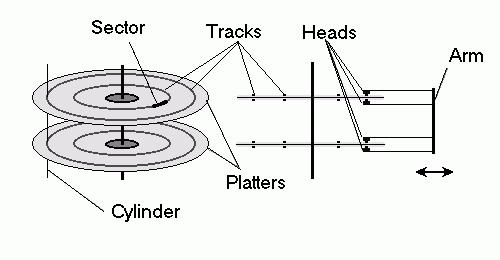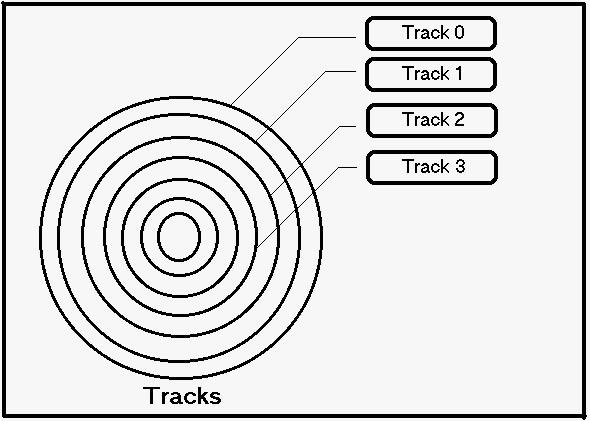|
Low-level hard disk geometry
When we say low level hard disk geometry, we have not very much concerned to know the physical circuitry of the disk. Here we are going to discuss the terms with which we are going to deal now to understand the disk troubleshooting and data recovery programming above after.
The low level hard disk geometry is usually concerned with the following terms:
- Track
- Cylinder
- Sector
- Head or Side

The platters of a hard disk have two sides for recording the data. Every surface of the platter has invisible concentric circles on it, which are written on the surface as magnetic information during the formatting of the hard disk. These circles are called tracks. All information stored on a hard disk is recorded in tracks. The tracks are numbered, starting from 0, starting at the outside of the platter and increasing as you go in.
About the maximum number of tracks and cylinders, we shall discuss in detail in the next chapters. However for now we can get the knowledge of physical low level geometry of maximum numbers of Cylinders, Tracks, Heads (sides) and sectors.
Name |
Start From |
End Limit |
Total Number |
| Cylinders |
0 |
1023 |
1024 |
| Heads |
0 |
255 |
256 |
| Sectors |
1 |
63 |
63 |
In the surface of the platter of a hard disk, the data is accessed by moving the heads from the inner to the outer part of the disk. This organization of data allows for easy access to any part of the disk, which is why disks are called random access storage devices.

|


